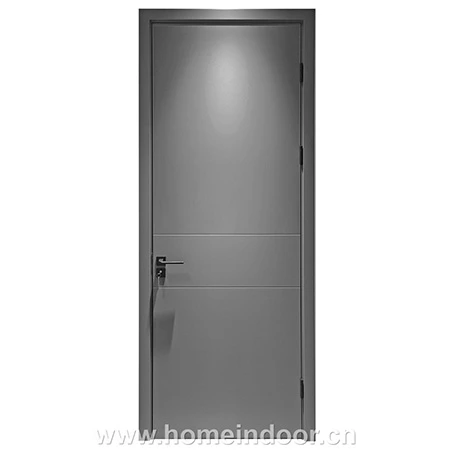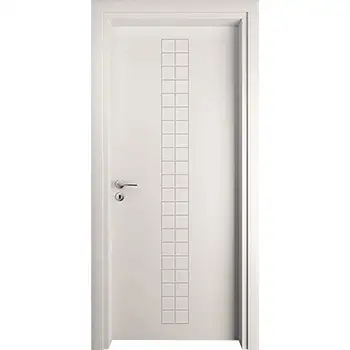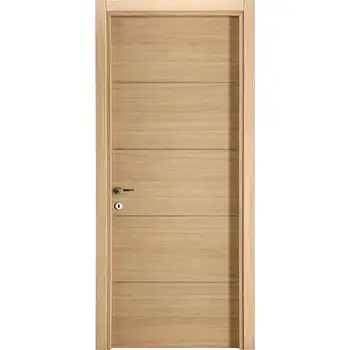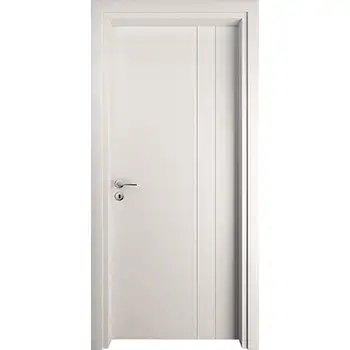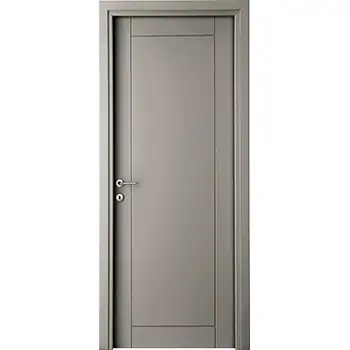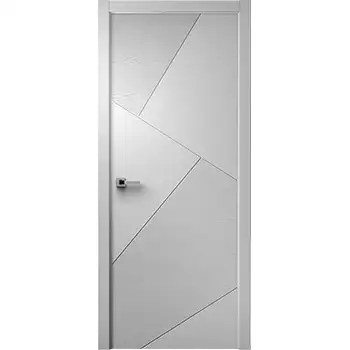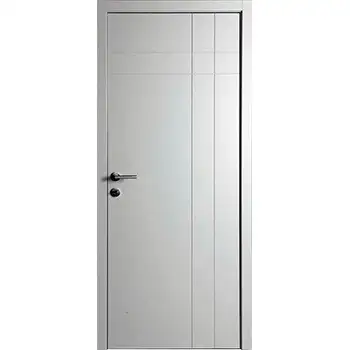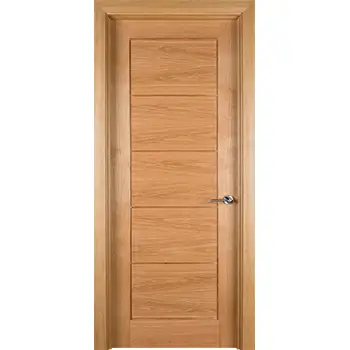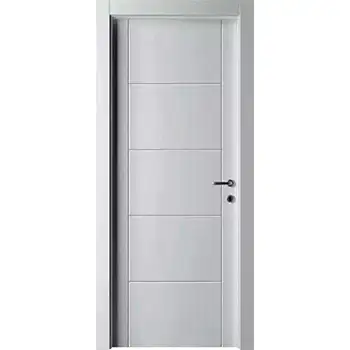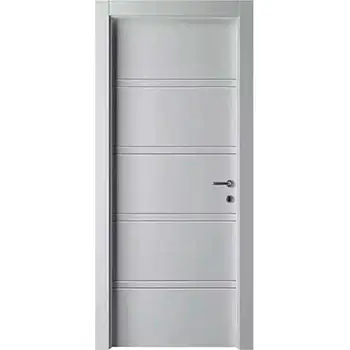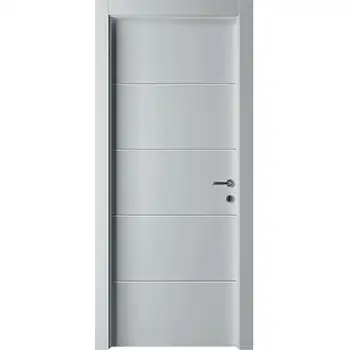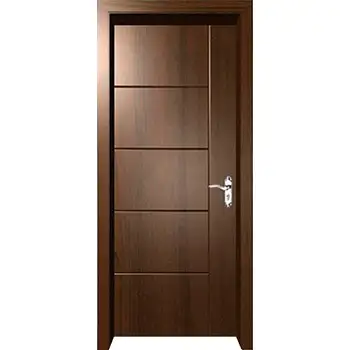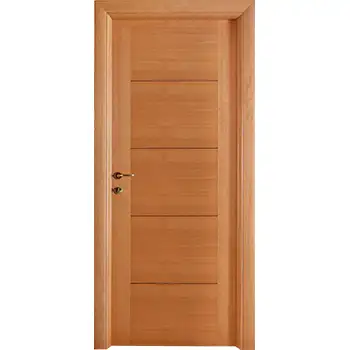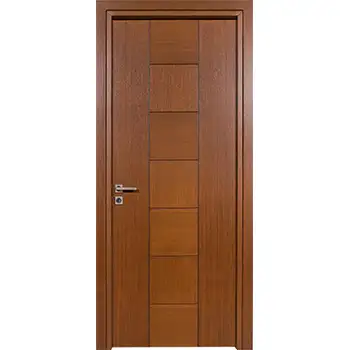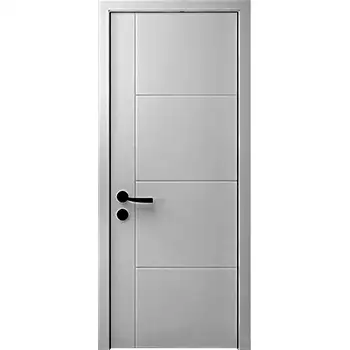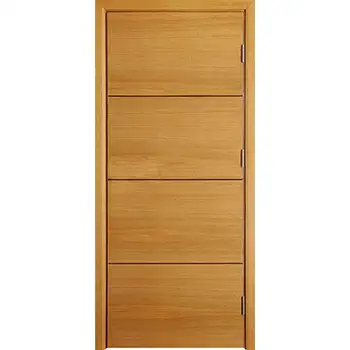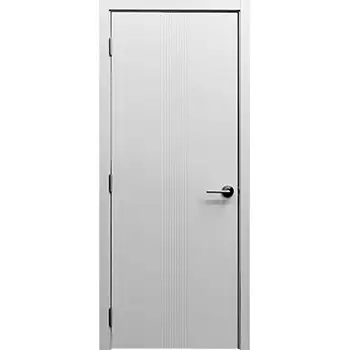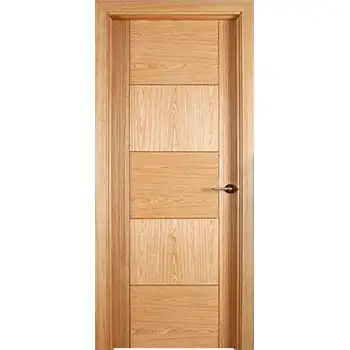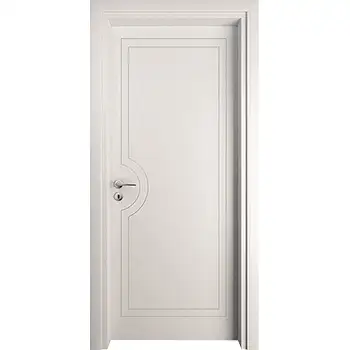Designing a wooden hotel room door requires careful attention to both functional and aesthetic factors. The door is not only a vital entry point for the room but also contributes significantly to the overall guest experience. A well-designed wooden hotel room door can provide the right balance of style, security, durability, and environmental responsibility. To ensure high-quality wooden doors, there are seven key points to consider in the design process.
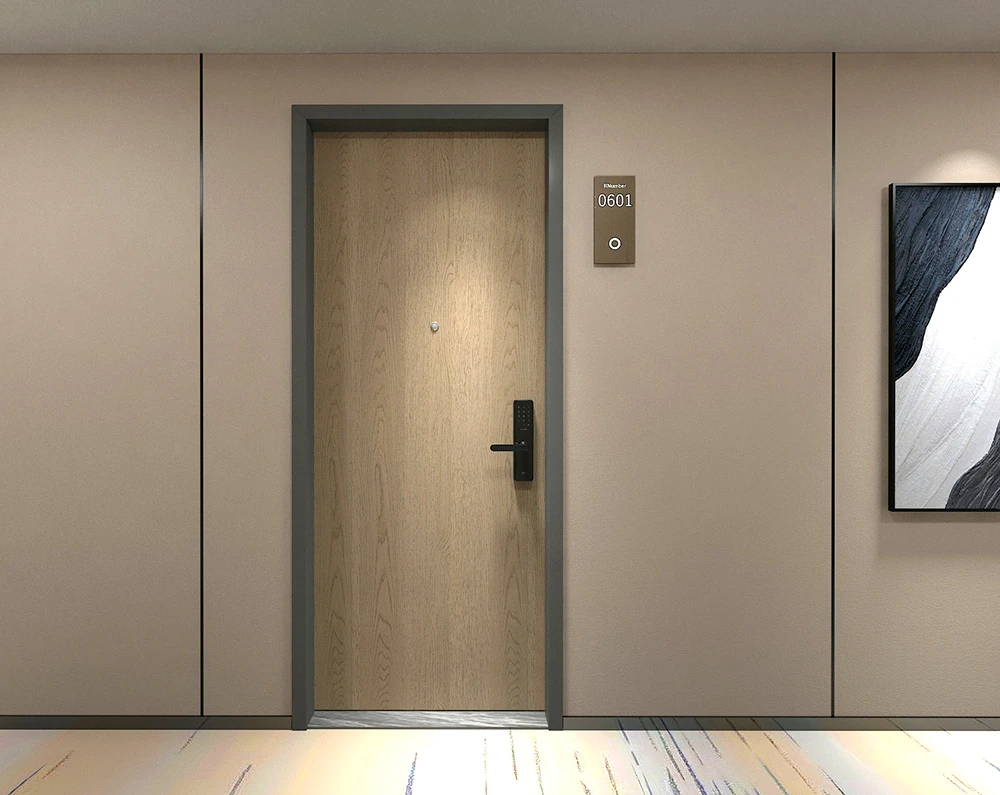
1. Aesthetics of wooden hotel room door
The aesthetics of a hotel room door play a crucial role in enhancing the room's overall ambiance. A door that complements the modern hotel interior design can set the tone for the guest's entire experience.
-
Door Color:
-
Solid Colors: Solid-colored doors such as white, black, or gray offer a sleek, minimalist design that aligns well with modern and contemporary hotel interiors. The clean lines and simplicity of solid-colored doors create a sense of sophistication.
-
Wood Texture: Natural wood finishes are timeless and bring a sense of warmth and organic beauty to the room. Popular woods like oak, walnut, or maple can provide a rustic or luxurious look, depending on the finish and texture.
-
-
Door Pattern:
-
Flush Design: A flush door (a smooth, flat door) is highly popular for its minimalist appearance. This design exudes elegance and simplicity, perfect for hotels focused on contemporary or minimalist design.
-
Flush Door with Metal Inlay: For a more luxurious look, flush doors with metal inlay (such as stainless steel or brass) offer a modern twist and a touch of sophistication. The inlay can create an eye-catching contrast and elevate the door’s visual appeal.
-
Door with Applied Moulding: For hotels aiming for a more classic or traditional aesthetic, doors with applied moulding add a level of detail and craftsmanship. The intricate designs provide depth and character, suitable for boutique or luxury hotels.
-
-
Hidden Hardware:
-
To create a cleaner, more minimalist look, hidden hardware is a great option. Hidden closers, security guards, drop seals, and smoke seals eliminate visible fittings and help maintain the sleek appearance of the door. This also improves both the door's aesthetics and its functionality.
-
2. Fireproofing
Safety is paramount when designing a hotel room door. Wooden doors must meet stringent fire regulations to protect guests and comply with building codes.
-
Fire Ratings: Depending on local regulations, hotel room doors should have a fire rating that ranges from 20 to 120 minutes. This ensures the door can contain fire and prevent its spread long enough for guests to evacuate safely in case of an emergency.
-
Fireproof Standards: The door must meet internationally recognized fireproof standards like UL10C, EN1634, and BS476 to guarantee that it performs well in high-temperature conditions. Compliance with these standards ensures that the door can withstand fire exposure and maintain structural integrity.
3. Sound Isolation
Hotel rooms need to provide a quiet, restful environment for guests. Effective sound isolation is a crucial element of door design.
-
STC Rating: The Sound Transmission Class (STC) rating of the door should fall between 28–42 dB. This range ensures that the door can block out noise from the hallway and neighboring rooms, contributing to a peaceful environment for guests. Higher STC ratings offer better soundproofing and a more comfortable stay.
4. Durability
Given the high volume of guests and frequent use, durability is essential in hotel room doors. A well-built door should withstand years of use without compromising its performance.
-
Hinges and Locks: Durable hinges and locks are a must. These components should meet ANSI Grade 1 standards, which are the highest rating for commercial-grade durability. Quality hinges and locks ensure smooth operation and long-lasting performance, even with heavy use.
-
Material Strength: The materials chosen for the door should be strong and capable of withstanding impacts, such as luggage being dropped or bumped against the door. The structure of the door should ensure both functionality and a consistent appearance over time.
5. Anti-Scratch Properties
Hotel doors endure a lot of wear and tear, especially from luggage and frequent guest usage. Anti-scratch finishes are essential to maintain the door's visual appeal.
-
Surface Finishes:
-
HPL Laminated Finish: High-Pressure Laminate (HPL) is the best choice for scratch resistance. It provides an extremely durable, impact-resistant surface that can handle frequent usage and prevent damage from luggage or other impacts.
-
Melamine Finish: Melamine offers good scratch resistance and is often used as a cost-effective alternative to HPL. While not as durable as HPL, it still provides a smooth, attractive finish that works well for medium-use environments.
-
UV Paint Finish: UV-cured paints are another strong option. They provide a hard, glossy finish that resists scratches and stains. This finish also helps reduce the emission of volatile organic compounds (VOCs) during the application process.
-
PU Paint Finish: Polyurethane (PU) paint provides a sleek, durable finish that resists some level of scratching. While it’s effective, it may not be as resistant to wear as HPL laminate.
-
6. Environmental Friendliness
Eco-conscious design is becoming increasingly important in the hospitality industry. Sustainable materials and finishes are crucial for hotels aiming to minimize their environmental impact.
-
E0 Engineering Wood: The core of the door should be made from E0-grade engineering wood, which is one of the lowest-emitting materials for formaldehyde. This standard ensures that the door is safe for indoor air quality and meets strict environmental criteria.
-
Eco-Friendly Finishes: Using finishes like HPL or water-based paints helps ensure the door does not release harmful chemicals like formaldehyde, which can contribute to indoor air pollution. These finishes are also more environmentally friendly compared to traditional oil-based paints, as they emit fewer VOCs and are safer for both the environment and the people using the space.
7. Convenience and Intelligence
In the era of smart technology, integrating smart locks into hotel room doors offers both convenience and enhanced security.
-
Smart Lock System: A smart lock system allows for keyless entry via mobile apps, keycards, or biometric scanners. This system reduces physical contact, streamlines the check-in and check-out process, and enhances security by allowing the hotel to monitor door access in real-time.
-
Guest Experience: Smart locks also improve the guest experience by enabling guests to unlock their doors remotely or use mobile phones as room keys. This adds a level of convenience that modern travelers appreciate.
Conclusion
The design of a wooden hotel room door involves much more than simply creating an aesthetically pleasing entry. By focusing on the seven key considerations—aesthetics, fireproofing, sound isolation, durability, anti-scratch properties, environmental friendliness, and intelligence—hotel owners and designers can create doors that not only look great but also provide long-term value, safety, and comfort for guests. A thoughtfully designed hotel room door enhances both the guest experience and the operational efficiency of the hotel, making it a fundamental element in the overall success of the property.


